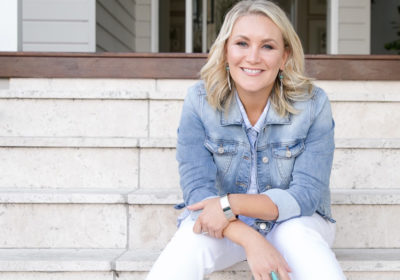
- Stats: 371 1 0
- Author: Melissa Histon
- Posted: 24/08/2020
- Category: Hey Soul Sista Podcast
Is your vagina normal?
The female body is amazing. Conceiving, carrying and delivering a baby is one of the most extraordinary things a human can do. But it can take its toll physically, especially for our vaginas and pelvic region. But what’s normal and what’s not?
Founder of The Female Focus, Physiotherapist, Erin Cuskelly, talks through some common problems with Mel that women can have, how to mend them and to reassure us that our vaginas are more normal than not.
Melissa:
Hey, soul sisters. So, I’m going to share something that’s very personal with you right now. Any brothers or men that are listening, you may want to potentially turn the sound down a little bit, because we’re talking girls’ stuff today, girly parts. We’re talking about vaginas. Actually, I don’t even know why I whispered that. We’re talking about vaginas today on Hey Soul Sista Podcast. So, I’m going to tell a little story. On the weekend, I was walking up to the beach with my hubby and my sister and our two puppies. We grabbed a coffee and we turned and started walking back home again.
Melissa:
We’re walking past Empire Park Oval. And all of a sudden, I got the sudden urge to sneeze. And as I sneezed, I kind of bent over a bit because I had this feeling. I’m like, “Ooh, this feels like it’s going to be a big sneeze.” And it was, and I peed myself. And it was not great. I was standing in the middle of an oval. Peed myself from a big sneeze. And of course, my sister thought that was hilarious. My husband was like, “What the hell? What’s going on there?” Yeah. And I’m like, it’s probably not the first time it’s happened. We used to have a trampoline. I used to love jumping on that trampoline, but had to stop because I would pee myself jumping on that trampoline. I don’t know what’s going on here.
Melissa:
I don’t know when that became a thing, but what is awesome is that a couple of weeks ago, we released a podcast episode, myself, Mel Sarge and Jess Shuwalow, on Hey Soul Sista called Bad Moms. And we were talking about a whole range of mum issues. And one of them I mentioned was about prolapses, which women can get, unfortunately, after having children. And this wonderful woman, Erin Cuskelly, reached out to me and said, “You mentioned about pelvic mesh and prolapses on your Bad Moms podcast episode. I’m actually a physiotherapist who helps women with their vajayjays and their female bits areas. And actually, I really think that women need to get some more information around that.” So, we’ve caught up for coffee and I was like, we absolutely need you on this show because you have so much good advice and wisdom about the health of our vaginas. Welcome, Erin Cuskelly.
Erin Cuskelly:
Thank you so much, Mel. And I’m so proud of you for sharing your story, because you’re so not alone. I mean, I see women all day, every day who pee their pants when they sneeze or jump on a trampoline. And I say, “What are you doing about it? What have you been doing to manage it?” And they’re like, “Oh, nothing. I just wear black tights so people can’t tell.” So, I think it’s so great that you have me on, and I’m so grateful for being here that we can get the information out there that there’s something you can do about it to help.
Melissa:
Yeah, thank you. Now, quickly tell us about what you do, because I didn’t even realize that there was a thing of women physiotherapists that look after vaginas and our… What do you call it? Your pelvic area?
Erin Cuskelly:
Yeah. So, we generally refer to ourselves as either pelvic health physios or women’s health physiotherapists. And even as a physio, when I started out treating sports, I didn’t know the scope of what women’s health physios actually treated and what they do. So, the most common things we see are incontinence, like leaking when you sneeze and that sort of thing. Prolapse is another big one. And these are so common. One in three women leak and 50% of women that have had a baby have some kind of prolapse. A lot of women walking down the streets are dealing with these issues.
Melissa:
And we’re not really talking about it.
Erin Cuskelly:
No, no, And so, yeah, people come to physio late maybe, after they’ve eventually gone to speak to their GP about it. So, more and more of what I do is a postnatal checkup, around that six week mark to check for early signs of these things before they become more difficult to manage or, yeah, more extensive. And that’s super, super helpful. Early intervention with anything is always the best way to go.
Melissa:
Yeah. So, I’ve been having that peeing myself problem jumping up and down on a trampoline or sneezing, I reckon for probably about maybe five or six years now. And I actually never thought to do anything about it. It just never occurred to me. I thought, actually, when I was walking across that oval and peed myself on the weekend, I kind of thought, “Oh, my God, am I going to have to start wearing those dependable…?”
Erin Cuskelly:
Yeah, yeah.
Melissa:
I mean, I’m too young for that.
Erin Cuskelly:
Unfortunately, that’s what people do, they just wack in a pantyliner or get a pad to deal with the leakage instead of kind of trying to address the cause that, fortunately, after having a baby and carrying a baby and pushing out a baby vaginally, particularly, your pelvic floor sits a little bit lower in your pelvis, so it doesn’t give the bladder as much support as it used to. So, when you’re in your twenties, you don’t consciously have to switch on your pelvic floor before you sneeze.
Melissa:
So, what is your pelvic floor?
Erin Cuskelly:
So, it’s a group of muscles that sits across the base of your pelvis. Women are kind of standing over a void all day. We don’t have much kind of propping up our pelvic organs, like our bladder and our rectum and our uterus, other than this pelvic floor muscle sling and some connective tissue. So, it’s super, super important. It stabilizes the lower back and the pelvis as well. It’s really important for sexual function. So, super important muscle group that it’s so funny that you ask the question what is it, because it’s so important for women, all women should know about it and know what it does.
Melissa:
And I know that they talk about pelvic floor exercises, where you’ve got to squeeze in really hard, you can do that. How many times a day should you be doing that?
Erin Cuskelly:
It’s different for everyone. If you don’t have an issue and you’re thinking about just doing it as a kind of maintenance thing, I always say do it every time you wash your hands after going to the bathroom. You’re supposed to wash your hands for 30 seconds. We know that with COVID. So, while you’re standing there washing your hands for 30 seconds, do your little pelvic floor squeezes. So, think about trying to stop yourself doing a fart, stopping the wee and holding it in, try and hold for 10 seconds. And just do that a few times. If you have an issue, if you are leaking, if you have prolapse or if you’re super, super weak and you can’t switch on well, then we have to kind of tailor it to be individualized.
Melissa:
What about sex?
Erin Cuskelly:
Yeah.
Melissa:
I mean, does sex affect the pelvic floor muscles?
Erin Cuskelly:
Well, I’d say the pelvic floor-
Melissa:
And if so, in a good or a bad way?
Erin Cuskelly:
I’d say sex doesn’t affect the pelvic floor muscles, the pelvic floor muscles affect sex.
Melissa:
Oh, really?
Erin Cuskelly:
Yeah, for sure. They have a huge sexual function, as well as continence function. So, we see a lot of women postnatally, C-section or vaginal delivery, with pain with sex. So, scars are a huge thing. You wouldn’t think having a C-section would affect your sex life, but that scar across the abdomen can affect the mobility of the cervix. The cervix needs to move when you’re having sex. And if it can’t, it becomes painful.
Melissa:
Really?
Erin Cuskelly:
Yeah. And so, same goes for episiotomy scars, perennial tears.
Melissa:
Really? Soon. See, isn’t that funny? I would have thought if you had a cesarean, you weren’t going out of your vagina, that your vagina would just stay vaginal.
Erin Cuskelly:
Yeah. So, we can see an overactive pelvic floor after a C-section, which again, you can get pain with penetration or with inserting a tampon, those sort of things. So, even if you’ve had a C-section, your pelvic floor can definitely be affected and your sex life can be affected. And the other big one is hormonal changes. So, yeah, obviously, the pelvic floor gets its health and the vagina gets its health from estrogen. So, if you’ve got lower estrogen during breastfeeding or menopause, definitely the vaginal tissue is a bit drier and not as healthy, and that can play a big role in your sexual satisfaction as well.
Speaker 1:
Let’s get soulful on social media. Search the Sista Code Facebook page and follow us on Instagram.
Melissa:
Let’s look at me for a sec. Okay. I’ve got the occasional peeing myself, sneezing, jumping on a trampoline, which I try to minimize. What do I need to do? Is it just do the squeezing of the pelvic floor?
Erin Cuskelly:
Unfortunately, if you’ve had a baby and you’re a woman, you kind of have to commit to doing daily pelvic floor exercises forever, and that’s just the lot that we’ve given. So, pelvic floor exercises is the number one thing. It depends on what’s causing the leaking. Sometimes it’s a little bit more to do with the stretchiness of the connective tissue that we see with prolapse. There are little support devices that you can use if it’s sort of a bigger concern for someone and they’re leaking more often, not just once a month with a sneeze. If they’re leaking every time they try and go to the gym, every time they go for a walk, we sometimes offer a little support with a pessary, which is a plastic device that kind of supports that area. But pelvic floor training, looking after your diet and your lifestyle factors, making sure you don’t get constipated. All of these things are really important in taking care of that area.
Melissa:
Okay. Let’s talk prolapse.
Erin Cuskelly:
Yeah.
Melissa:
Years ago, my nanny had unfortunately had a prolapse where both I think her bowel and her bladder started coming out her vagina. And she had to have a couple of operations. They made a sling to put inside to hold it all up. And she had a lot of problems post-operation, had a lot of problems with that. And I remember, I was probably in my early twenties and was mortified at the thought that that could happen to someone.
Erin Cuskelly:
Absolutely.
Melissa:
I just remember going, “Oh, my, is it even a thing?”
Erin Cuskelly:
Yeah. And I think that’s what, most women have heard the term prolapse, but they think, “Oh, that’s what my grandma had when everything was falling out her vagina.” But there’s different grades of prolapse. It’s quite severe prolapse if you can actually see an external bulge, you’re more like in a grade three to four prolapse. So, what we like to check for postnatally is if there’s early signs of a little bit of a bulge from the bladder or the bowel just coming into the vaginal canal. So, not exiting and you may not have symptoms or they might be very mild symptoms. But if we can pick that up and put in strategies to support that area, you can stop that from progressing into a worse prolapse or worst symptom. And like your grandma, a lot of women notice a big difference post-menopausally. So, if you put in these strategies post-baby, and in your twenties, thirties, forties, fifties, then hopefully you don’t get that severe progression post-menopausal. I mean, a lot of women still have prolapse surgery for those cases, but there are things we can do to manage the early symptoms.
Melissa:
What causes the prolapse? Because I had heard, and I don’t know if this is a rumor or a myth, that it’s because you were told to push too early when you were pushing a baby out.
Erin Cuskelly:
Yeah. So, there’s lots of different causes. Basically, your vaginal wall is soft and floppy. And the only thing that kind of splints your bladder up at the front and your bowel up at the back is this stiff connective tissue, your endopelvic fascia. So, carrying a baby and pushing out a baby stretches that tissue and allows a bit more give in the vaginal wall, but things that contribute to that, like a big baby over four kilos, a long pushing time, use of forceps, a more traumatic delivery, and genetics. Like stretch marks, you mostly inherit them from your mum. If your mum had a looser connective tissue, then unfortunately, you’re probably more likely to, but the type of delivery and the length of delivery, those sort of things play a big role as well.
Melissa:
Yeah. Does it matter how many kids you have?
Erin Cuskelly:
It’s interesting. The most, I don’t like to use the word damage, but the most stretch is done with the first delivery. And then you can get a little bit more stretch or change with the second. Generally after two babies, it doesn’t get any worse.
Melissa:
Okay.
Erin Cuskelly:
So, there’s a lot of women that sort of get to that point where they’re questioning, “Should I have a second vaginal delivery? Should I talk to my doctor about a C-section? Am I going to make things worse?” But you can kind of have a little bit of confidence in knowing that the most damage is done with that first delivery.
Melissa:
I only had one delivery. Apparently, that was enough to make me pee.
Erin Cuskelly:
Yeah, well, like I said, most of the time, it’s that first one that’s the biggest kind of shock to the system. The biggest stretch to the tissues.
Melissa:
If you have a prolapse, and say a minor prolapse, does that affect sex or having another baby?
Erin Cuskelly:
Neither. So, generally, an early grade prolapse, you won’t even know that it’s there. You might feel a little bit of a heavy feeling in the vagina or a dragging sensation, maybe just at different times of the month, but most partners would say they wouldn’t notice a difference at all. And most women would say the same thing. So, during sex, it doesn’t seem to make any difference really at all. And even with severe kind of grade three, four prolapses, it just means that you might need a little bit of good communication with your partner, just getting your comfort, but it doesn’t stop you from having sex at all.
Melissa:
Yeah. I saw in the media a couple of years ago, there was controversy around the pelvic mesh.
Erin Cuskelly:
Yeah, absolutely. Yeah. So, there’s still some forms of pelvic mesh that are safe to use and they still use that for prolapse surgery.
Melissa:
So, they use that as the sling to hold up the bowel, things like that?
Erin Cuskelly:
Yeah. So, basically, to reinforce that connective tissue. So, they were using a specific kind of medical mesh that was safe to use in the abdominal cavity, but they didn’t realize that the vaginal tissue wasn’t going to cope with it as well. And that’s when all the issues started, but that has obviously, it’s been in the media and gone through all the lawsuits and they’re not using that kind of mesh currently.
Melissa:
So, out of people that have prolapses, varying degrees of prolapses, how many actually require surgery, do you reckon?
Erin Cuskelly:
That’s a really good question. because it largely comes down to comfort. So, and there are a couple of different options with surgery. I couldn’t actually tell you the stats out of, because it would depend on the grade of prolapse and whether people progress to surgery. But yeah, there are lots of conservative management options as well. And circling back to sex, you can use a pessary, like we were talking about, while you’re having sex to support the prolapse and make things more comfortable. So, it’s only really the severe grades that progress to having either a mesh surgery or a hysterectomy.
Melissa:
Yeah. Wow. Okay. So, someone is peeing themselves a lot or they have a prolapse and they come to see you. What do you do?
Erin Cuskelly:
Yeah. I think a lot of women are apprehensive about having an assessment, a pelvic assessment.
Melissa:
I get that. I’m like, “Do you know what? I don’t like the thought of having to strip off and have somebody messing around down there.”
Erin Cuskelly:
I think really, once you experience it, it’s not as bad as what you think it’s going to be. So, we try and maintain your modesty as best as possible. But we do have to have a look and see. Otherwise, we can’t look for signs of prolapse or that sort of thing without actually visualizing and having a squeeze. So, we have a private space, so I try and make you as comfortable as possible. We have a look and see if you can switch on your pelvic floor, we can see the signs that your vagina’s kind of closing and lifting in the right way. We’d check for signs of prolapse. And then we also often do a digital examination to check the pelvic floor muscle strength, and to have a closer look at what the tone of the tissue is, if there’s any trauma to the muscles from birth, all those sorts of things.
Melissa:
Do some people kind of get traumatized by it?
Erin Cuskelly:
Yeah. So, a lot of women that have a history of pain or history of abuse or trauma, obviously, it’s not appropriate to do that kind of examination. Or I do see young women with endometriosis and adolescent girls and I wouldn’t be doing that kind of assessment with them. So, the other option is a real-time ultrasound where we can see through an ultrasound on the abdomen the bladder lifting and the pelvic floor muscles working. So, we don’t get as a comprehensive kind of picture of what’s going on, but it’s a really good option for someone that just is not comfortable having a vaginal examination.
Melissa:
Yeah. Fair enough.
Melissa:
Do people need to go see a doctor and get a referral to see you, or can they just make an appointment?
Erin Cuskelly:
Yeah, you can just show up and make an appointment like any physiotherapist. If you’ve had a traumatic birth, if you’ve had a grade four tear or something along those lines, you’ll be referred to a physio as a suggestion to follow it up. But otherwise, it’s not something that’s necessarily encouraged by the doctor or talked about as much as it probably should be. But yeah, there’s several fantastic women’s health physios in Newcastle and you can just call and make an appointment.
Melissa:
So, can I ask you a question then? When should someone see a gynecologist, or when will they come and see you, a female health physiotherapist?
Erin Cuskelly:
I think a gynecologist is more invasive of treatment. So, if you’re at that stage where you’re considering the use of medication or surgical invention, then yes, a gynecologist definitely has to be involved. If you are feeling quite good or you just want to have a checkup and make sure everything’s okay, or you’re having some milder symptoms like occasional leaking, heavy dragging sensations, you’re worried about your abdomen separation, all those sorts of things, we can check in. We can get really, really good results at physio. So, about 75% of stress incontinence, which is what you’re talking about, can be cured completely just using conservative pelvic floor muscle training and those sorts of strategies.
Melissa:
So, I’m going to ask the question. How many vaginas that you see are normal?
Erin Cuskelly:
All of them. They’re all normal.
Melissa:
Is my vagina normal?
Erin Cuskelly:
They’re all completely normal. All different, but all normal. Yeah. So, there are certain measurements that we take. Talking about women kind of standing over a void, so we want to minimize that void. So, there’s different measurements we can take to see how high the pelvic floor is sitting, how tight it is, what the tone is like. And so, those are sort of things that we do put in kind of a normal category or what we like to see, but they’re changeable, so you can work on them. But yeah, all vaginas are completely normal. It might not be quite the same as what it was before baby, but completely normal and still functional.
Melissa:
Okay. And I’ve realized this is a random question, but do they all look alike?
Erin Cuskelly:
No, no. It’s an interesting question, because you don’t necessarily get to compare and contrast all different vaginas and I see a lot in my day.
Melissa:
Well, it’s one of those things. It’s like, you don’t really get to check out, unless you’re drunk at a party with your friend Nancy who likes to actually compare vaginas sometimes. Yeah, she really does.
Erin Cuskelly:
I’d say they’re all completely different. And women, the funniest thing that I’ve found in the last few years is women will always apologize about not having a wax, but it’s only this window period of women between 30 and 40 that worry about grooming and pubic hair. Anyone after that is like, “Ah, whatever, it’s fine.”
Melissa:
You know, it’s funny. I would totally be like that. It’s like, I had breast cancer years ago, and so, I have to go and have my BB checkup from a specialist every year. And half the time, I forget to shave my armpits. And then I get there, I’m like, “I’m really sorry. I forgot to shave my pits.” Because they have to shove their hands up inside your armpit to feel the lymph nodes and everything. And I always feel so apologetic. I’m like, “I’m sorry you’re digging around with spiky underarm hair.”
Erin Cuskelly:
I would say, you don’t have to prepare for an appointment. People often ask what they need to wear or what they need to do and you don’t need to do anything. You just show up and yeah, it’s run of the mill. It’s just like examining a lower back or a neck or anything else for us. It’s just a body part.
Melissa:
Yeah. Well, look, thank you so much, Erin.
Erin Cuskelly:
It’s been fun.
Melissa:
For coming and sharing that awesome information. Because again, it’s one of those topics that we kind of generally don’t talk about, unless we’ve had a few wines with our girlfriends, maybe at a party. Yeah.
Erin Cuskelly:
I would encourage if your girlfriends are joking about it after you’ve had a few drinks and talking about how they leak when they giggle, just encourage them to see if there’s anything they can do about it.
Melissa:
Yeah. And I think it’s a really great option. I didn’t even realize that what you did was a thing. I kind of in my head, I was like, oh, well, if you have a problem dealing with your vagina or your female pelvic floor parts, that you just had to go see a gynecologist. And to me, that always, in my mind, that seemed so clinical. I didn’t even realize that there’s a beautiful, I mean, when I say beautiful, I mean inside, kind, caring, beautiful lady.
Erin Cuskelly:
Thanks, Mel.
Melissa:
That’s a physiotherapist that I can just, energetically, I can feel what a nurturing person you are. And I think that to go into women’s health, you must have that lovely, caring nature about you, because we are, we worry and we get embarrassed about our sexual health and you can feel really exposed.
Erin Cuskelly:
Absolutely. It is a vulnerable thing to talk about. And we know that women don’t get help. There’s lots of studies showing that women don’t talk to their doctor about it. They don’t go and see someone about it when they’re experiencing pain or difficulties in that area. So, yeah, just reach out and there’s lots of things you can do and get the ball rolling. And we look after our bodies in other ways, so don’t forget about your vagina.
Melissa:
Absolutely. How can people reach out to you?
Erin Cuskelly:
You can have a look at my Instagram. All my business is The Female Focus Physiotherapy, and my website is the same, femalefocusphysiotherapy.com.
Melissa:
Thank you, beautiful Erin.
Erin Cuskelly:
No worries. Thanks for having me, Mel.
+ Follow Mel at @melissahiston
+ Follow Hey Soul Sista at @sistacode
+ Subscribe to make sure you hear the next instalment of Hey Soul Sista Podcast
+ melissa@thesistacode.com
+ Produced by Newcastle Podcast Station






